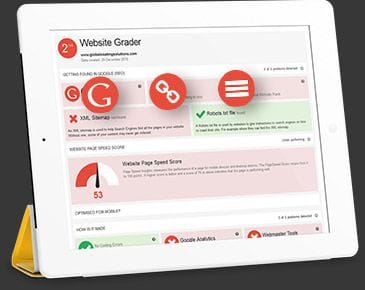SEO Metadata: The Importance of a Click-Worthy Meta Description
)
Even among the knick knacks and patty whacks added to Google's search engine results pages (SERPs) over the years, there's still one staple feature that continues to have the largest impact over whether users click through a search result.
According to a study from Ignite Visibility, meta descriptions, followed by brand and meta page title, have the largest influence on organic click-through rates. The survey polled over 500 participants in the 25-60 age range.
Here's the breakdown my percentage:
When asked which search factor influenced their decision to click through a result on Google
- 62% said the meta description;
- 4% said the brand name, and;
- 13% said the page title
However, in somewhat contradictory fashion, 55.1% of study participants said they'd only click through a search result if they recognize the brand name first.
How We Should Approach Metadata and Brand Names
Considering the survey points to brand recognition as the second most important factor driving clicks on organic search results, building brand awareness needs to be a priority alongside your SEO efforts, and vice versa. Owning a recognizable brand seems to be key to gaining more and capitalizing on organic visibility.
In terms of metadata, we can't understate its importance, as it holds the top two spots on click-through rate impact for users. Therefore, you or your SEO will want to spend time writing up thoughtful, compelling meta descriptions that align with your user's search intent (otherwise Google will grab a snippet of copy from the page it deems more relevant to the user).
A similarly compelling page title is just as important. Again, you'll want to align the title with the user's search intent, and do your best to have your focus keyword for the page somewhere in the 60-character-count-preferred limit.
Related: 12 Easy SEO Tips to Boost Your Website's Ranking
Meta Description Best Practices
If your click-through rates aren't where they need to be, or you simply haven't updated the copy in a while, here are some best practices to follow for more clicks and traffic:
- Length: Your meta description can actually be any length, though Google truncates them to about 155-160 characters (including spaces). Meta descriptions should be pretty descriptive, so use the real estate you're afforded and craft descriptions between 50-160 characters.
- Format: While Google doesn't use keywords in the meta description as an SEO ranking factor, you'll still want to include some for relevance. Keywords, combined with a description that's more or less an 'advertisement', should yield something users want to click.
- Style: Descriptions should focus on advertising and enticing the click-through, but don't be overly spammy. Be authentic. Craft something readable and compelling that really hits on answering the user's search query. You should also be aware that Google bolds any keywords in your description that matches a user's search query, so including them can give you a bit more visibility on the SERP.
- Avoid duplicates: You don't want all your meta descriptions to be the same for all your pages users' eyes will eventually start glazing over them. There are certainly programmatic ways to craft unique meta descriptions for automated pages in particular, but nothing ever beats an original, handcrafted description for each page.
- Pass on double quotation marks: Finally, be mindful of double quotation marks. Google actually cuts the description off at the quotation mark when it appears in a SERP. Remove all non-alphanumeric characters from your meta descriptions to be extra safe.
Looking for a boost to your organic traffic? Bloomtools' SEO experts can optimize your site for search, and garner more clicks and traffic that'll convert into loyal customers. Get started today and get in touch with our staff!
) Author:Boaz Willinger
Author:Boaz Willinger| Tags:BloggingSearch Engine Optimization |




)
)
)
